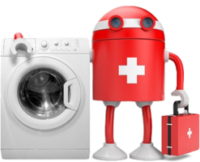Stove, Range and Oven Repair
Gone are the days of the kerosene stoves and other mundane stoves. There is a whole new range of kitchen gas and electronic stoves and ovens that are handy and much easier to use than their earlier counterparts. They are even much more fuss free when cleaning and maintaining them on a daily basis. But as with every electronic or gas appliance, these gas and electric stoves and ovens too need regular repair and servicing. Electric and gas stove and oven repair services are offered by almost all the repair shops that have appliance repair services. So in case you’re stove or oven are giving you a bit of trouble, call up an stove and oven repair serviceman, without any further delay.
If you need to have someone repair your stove or oven, call Mike at 207-619-3888 and we will have a stove and oven repair person contact you promptly to assist you with your problem. Our customers are our greatest asset and your recommendation to your friends is you’re your greatest compliment to us. We are more than happy to answer any questions about stove and oven repairs that you might have. Even for the “do-it-yourselfers”.
How an Electric Range Works
Whether a range, stove or oven, the principle for heating and temperature control is the same. Electricity flows through an element which, because of electrical resistance, gives off heat. The more electricity applied, the more heat generated. The temperature control works like a dimmer to increase or decrease the flow of electricity. It is called an infinite switch because it is infinitely variable.
A stove consists of several burners, usually four, each with an individually controlled heating element. The heating element is an electrical wire insulated by a nonconductive sheath. The heat passes through the sheath but electricity does not, that is why you don’t get shocked when you touch a pot on the stove. When a problem occurs with a burner, it is usually a defective element, defective switch or a loose connection. They are very simple circuits and that makes them easy to repair.
Smooth top cooking surfaces put a sheet of glass between the heating elements and the cookware. Some of these stoves feature instant heat surfaces in which the heating element is augmented by a halogen light. Some stoves use enclosed or ceramic elements to improve the look of the cook top. Those elements are functionally the same standard elements except they are encased in ceramic material.
An oven typically has a baking element and a broiling element. These two elements are controlled by an oven selector switch and/or a temperature control. They work in the same way as a stove’s burner with the exception that a thermostat monitors the temperature and opens the circuit when the temperature reaches the limit set on the temperature control. When the temperature drops to a preset point, roughly 20 degrees, the circuit is closed and the element heats up again.
An oven’s inner shell is typically enameled steel. Outside of the shell is a layer of insulation to prevent the high temperatures generated in the oven from being transmitted to its outer surface.
Ovens use a clock and timer to aid in cooking and to control features such as the self-cleaning mechanism. Many ovens have an interior light, which may go on when the door is opened and/or manually via a switch.
Convection ovens are just an oven with a fan inside, it’s that simple. But the fan significantly improves the function of the oven. The circulation of the air inside the oven results in faster, more even baking.
A self-cleaning oven burns off the residue in the oven by heating up to roughly 700 degrees. A timer turns off the heat but usually will not allow the door to be unlatched until the temperature has dropped to a safe level. Never attempt to open an oven during a self-cleaning cycle or before it has sufficiently cooled down. For the self-cleaning feature to work, the door must be latched closed.
How a Gas Range Works
A gas oven or a range as it is commonly called is a compact unit of four burners on the top and an oven which works on gas. Heat for cooking is produced by burning the correct mixture of gas and air.
The supply of LPG gas enters from the cylinder and is carried to the burner. In the ‘mixture tube’ the gas mixes with air. As gas comes out of the holes of the burner, it mixes with more air and as soon as a source of light is applied e.g. a matchstick or lighter, the mixture is ignited, and it is ready for cooking. Usually there are four burners and the flame can be increased or decreased by a knob.
The oven burner is situated in the oven bottom. Setting the oven thermostat to a required temperature activates the burner and it works on the same principle as above. The air opening in the oven bottom spreads the heat and as the desired temperature is achieved the burner automatically switches of.
Gas oven requires pre-heating as it takes time for the oven to reach a pre-determined temperature. But a timer and automatic temperature control mechanism makes it very convenient to use. Not only it costs less to use than electric appliance but retains heats for up to 15 minutes so that it can be used like a food warmer.


